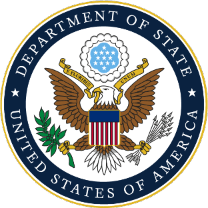Unique Tag: Government enforcement support
Species Identification Guide for Lao PDR, Myanmar and Thailand
An 89-page guidebook to help enforcement officers identify species openly sold in markets in three Mekong countries. Also available in Burmese, Laotian, Thai, and Chinese.
Owls of India ID Guide
An identification guide to support enforcement identify species of Indian owls in illegal trade.
Guidance To Photographing Live Tortoises and Freshwater Turtles for Identification
Provides standards for capturing and using photographic evidence to support wildlife trade investigations. The guide details best practices for photographing seized wildlife and related materials to ensure the evidence is useful for legal and enforcement purposes. Guidelines aim to enhance the quality and consistency of photographic documentation in wildlife crime cases, supporting effective enforcement and prosecution.
Cyberspotters Machine Learning System
A machine learning system that can isolate potential illegal wildife trade products for sale on online marketplaces. Current training data is on ivory, pangolin, wild cat teeth and claws, elephant hair and skin. The system is housed at WWF Singapore and is part of the Cyber Spotters initiative. Data extrapolated from this system gets forwarded to law enforcement (if deemed serious), to e-commerce companies (for their records) and kept internally to be used as references for potential future action i.e. demand reduction initiatives, digital deterrent.
Wildlife Sentinel
Wildlife Sentinel is an app to help staff at airports, airlines, and other aviation companies report suspected wildlife trafficking and corruption. The app is anonymous and is available for download on the Apple Store and Google Play Store.
CITES Trade Database
The Convention on International Trade in Endangered Species of Wild Fauna and Flora (CITES) Trade Database, managed by the United Nations Environment Program World Conservation Monitoring Centre (UNEPWCMC) on behalf of the CITES Secretariat, is unique and currently holds over 13 million records of trade in wildlife and over 34,000 scientific names of taxa listed in the CITES Appendices. Around a million records of trade in CITES-listed species of wildlife are currently reported annually and these data are entered into the CITES Trade Database (an Oracle relational database) as soon as they are received by UNEP-WCMC. CITES annual reports are the only available means of monitoring the implementation of the Convention and the level of international trade in specimens of species included in the CITES Appendices. The CITES Trade Database can be queried and data downloaded from the CITES website (www.cites.org) or the UNEP-WCMC website (http://unep-wcmc.org/citestrade). You can contact UNEP-WCMC directly (see Annex 6 for contact details) if you have a specific data request that you are unable to answer using the online data querying facilities.
Traditional Asian Medicine Identification Guide for Law Enforcers: Version II
Identification guide for traditional Asian medicines in trade made to assist enforcers with determining which medicines and ingredients are legal or illegal, in the context of the cases they adeal with. The majority of law enforcers have no knowledge of Chinese characters and the many forms that these medicines take. This guide is primarily for law enforcers based outside Asia, in countries where large volumes of traditional Asian medicines are imported. The regions where this version of the guide may be of most use include Europe, North America and Australasia.
SMART 7
SMART enables the collection, storage, communication, and evaluation of data on patrol efforts, patrol results, and threat levels. It is a conservation area management platform, including mobile, desktop, and cloud-based components with a wide range of applications in conservation practice. This platform allows conservationists to easily collect, visualize, store, analyze, report and act on a wide range of data relevant for protecting wildlife and improving your overall conservation impact. SMART 7 is the latest version that has been released. Multiple tools are bundled in the app that can be used for different purposes.
TWIX
The trade in wildlife information exchange (TWIX) online platform features a series of tools developed to facilitate information exchange and international cooperation between law enforcement agencies across Europe and Africa.
Wildlife Alert
Wildlife Alert was designed for military personnel, who often purchase wildlife products as souvenirs, to determine if a products made from a protected species. Both the United States Department of Defence and Wildlife Conservation Society agreed to make the app available to the public in an effort to better combat illegal trade, particularly in Afghanistan. The app’s database allows for over 75 species to be identified, including all species of cat from around the world. Despite its ease of use, it doesn’t allow users to report the vendor. It does, however, inform and raise awareness of the types of items that could potentially be confiscated.


